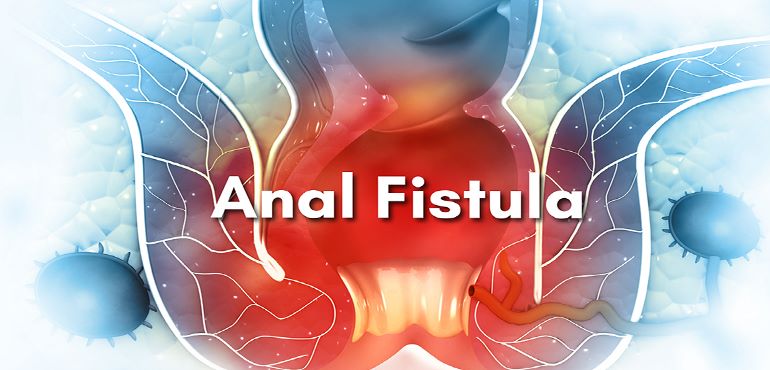
ANAL FISTULA
An anal fistula, is also called as fistula- in -ano, it is a small channel / tunnel like passage that develops between the anal canal and the skin near the anus. This is a painful condition, especially when the patient is passing stools. It can also cause bleeding and discharge during defecation.
Almost all anal fistulae occur due to an anorectal abscess that begins as an infection in one of the anal glands. This infection spreads down to the skin around the anus causing fistula-in -ano. The anorectal abscess usually leads to pain and swelling around the anus, along with fever. A fistula-in-ano happens when there is failure of the anorectal abscess wound to heal completely. Almost 50% of patients with an abscess go on to develop a chronic fistula-in-ano.
SYMPTOMS
- Pain- Constant pain which gets worse when sitting down
- Irritation around the anus, like swelling, redness and tenderness
- Intermittent discharge of blood or pus through the opening
TREATMENT
The only definitive treatment for an anal fistula is surgery. The type of surgery will depend on the position of the anal fistula. Treatment for anorectal abscess involves incising the skin over the abscess to drain the pus. This is done usually under local anesthesia.
While most patients (about 80%) are treated by simply laying open the fistula tract to flush out pus, called Fistulotomy, there are several other methods of treating fistula in ano, depending on the location and severity of the fistula, as well as the patient's overall health.
- Observation: In some cases, observation may be recommended to monitor the fistula and manage symptoms. This may involve maintaining good hygiene and avoiding activities that may exacerbate the condition
- Fistulotomy / Fistulectomy: Fistulotomy is a surgical procedure that involves cutting open the fistula and fistulectomy involves excising the whole tract. These are the traditional way of treatment but leaves a large wound and are associated with significant post-operative pain. There is a need for regular dressing and oral antibiotics and analgesics after surgery
- Seton placement: Seton placement involves the placement of a piece of thread or other material through the fistula to help keep it open and promote drainage. This can be an effective way to manage symptoms in acute stage when the ongoing infection
- Fibrin glue: Fibrin glue is a type of adhesive that can be used to seal the fistula and promote healing. This is a minimally invasive procedure that can be effective in some cases
- Laser treatment: Laser treatment is a minimally invasive procedure that uses a focused beam of light to target the affected tissue. This can be effective in treating fistula in ano, with reduced post-operative pain and a shorter recovery period
- LIFT procedure: LIFT (Ligation of Intersphincteric Fistula Tract) procedure involves the placement of a stitch to tie off the internal opening of the fistula, followed by removal of the infected tissue. This can be effective in treating complex fistulas
- VAAFT: This means video assisted anal fistula treatment. This is state of art treatment of anal fistula where the fistula tract is visualised from inside with the help is specialised video-endoscope. The dead necrotic tissue is removed, internal opening is closed and the distal tract is then fulgurated with cautery or managed with LASER. Whole procedure is done under vision and there is minimal post-operative pain with no need for post-operative dressings
The choice of treatment for fistula in ano will depend on a range of factors, including the location and severity of the fistula, the patient's individual needs and preferences, and the expertise of the treating physician. In most cases, a combination of approaches may be necessary to manage the condition effectively and prevent recurrence

